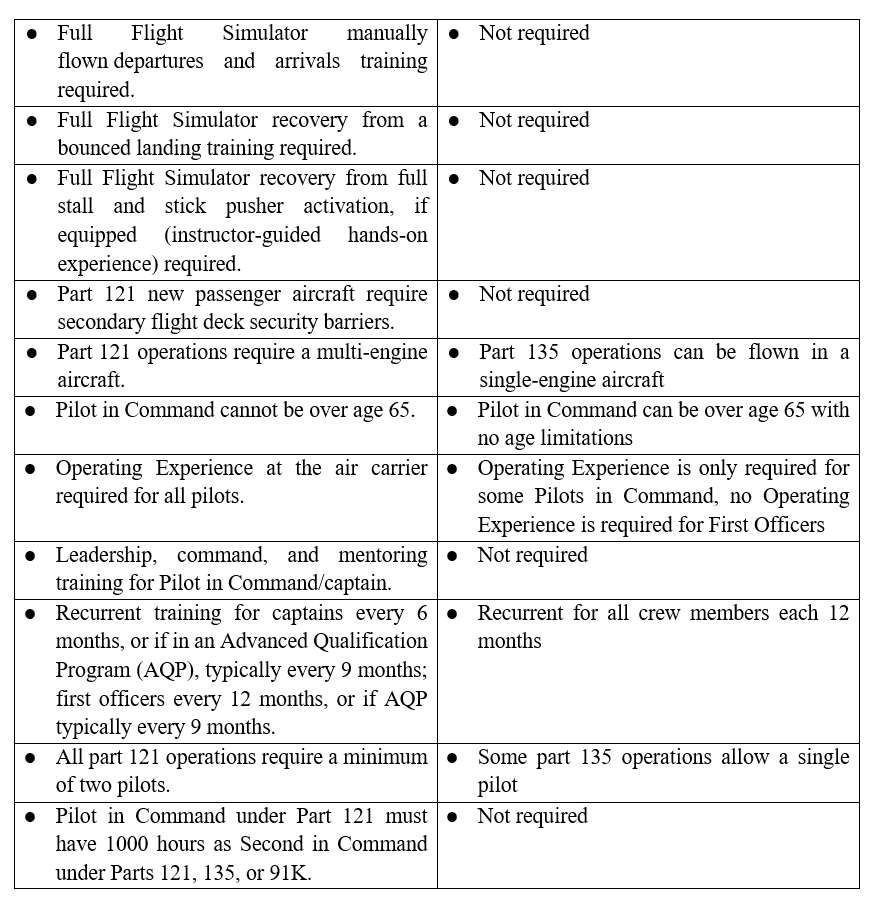October 13, 2023
The Honorable David H. Boulter
Acting Associate Administrator, Aviation Safety
Federal Aviation Administration
1200 New Jersey Ave, SE
Washington, DC 20590
RE: Regulatory Definitions of On-Demand Operation, Supplemental Operation, and Scheduled Operation
Docket No. FAA-2023-1857
Mr. Boulter:
On behalf of the Transportation Trades Department, AFL-CIO (TTD), I am pleased to respond to the Federal Aviation Administration’s (FAA) request for comment regarding its review of supplemental operations regulations for public charter operators. TTD consists of 37 affiliate unions representing transportation workers across the aviation industry, including airline pilots, mechanics, flight attendants, dispatchers, Transportation Security Officers (TSOs), and air traffic controllers. We therefore have a vested interest in any potential rulemaking governing public charter and on-demand operations.
It is imperative that the FAA ensure public safety by requiring all scheduled passenger operations to fall under Federal Aviation Regulations (FAR) Part 121 and follow the principles of One Level of Safety established by the Department of Transportation (DOT) and FAA for passenger operations utilizing aircraft with 10 or more seats. A 1995 FAA rule that removed flights operated under Part 380 public charter rules from the definition of “Scheduled Operations,” without consideration for safety or the scale of such operations, has created a loophole that has allowed the “high volume” and growing public charter industry, notably flights operated with aircraft of 10-30 seats, to operate at lower levels of safety than all other scheduled air services. This model of operation compromises the safety and security of the flying public and aviation workers while side-stepping the FAA’s commitment to One Level of Safety. This arrangement is unjustifiable and must end.
Scheduled flying should be considered scheduled service and operate under scheduled service safety rules. TTD strongly supports the FAA’s intention to revise the regulatory definition of “on-demand operation” in an upcoming rulemaking. If instituted, the rulemaking could return scheduled passenger operations, including charter operations, to the One Level of Safety that FAA and DOT achieved in the 1990s, while preserving a limited role in select, well-defined circumstances for Part 135 passenger operations, including to small communities.
Proposal to Remove the On-Demand Exclusion from the Definition of “Scheduled Operation”
The FAA explains in this Notice that scheduled passenger airline operations are generally carried out under Part 121’s safety regulations – the highest standard of safety in the FARs. However, as we note, the FARs do not require charter passenger carriers to carry out their operations under the same standard; rather, the FARs permit such operations to be carried out under Part 135. For that reason, in the Notice, the FAA focuses on the definition of “Scheduled Operation” at 14 C.F.R. §110.2, as follows: “Scheduled operation means any common carriage passenger-carrying operation for compensation or hire conducted by an air carrier or commercial operator for which the certificate holder or its representative offers in advance the departure location, departure time, and arrival location. It does not include any passenger carrying operation that is conducted as a public charter operation under part 380 of this chapter.” (Emphasis added.)
The FAA specifically excluded “public charters” from this definition. Further, “public charters” incorporate “on-demand operations,” which includes service using jet aircraft with up to 30 passenger seats. Such flights can be operated under Part 135, a lesser safety standard than Part 121, that governs passenger airline operations. There is no safety reason for such an exclusion.
Allowing Scheduled Operations Under Part 135 Places Passengers and the National Aviation System at Risk
Under One Level of Safety, the FAA directed Part 135 scheduled airlines to migrate to the higher Part 121 standard by certain dates. The One Level of Safety Notice of Proposed Rulemaking (NPRM) details that the rulemaking is supported by a National Transportation Safety Board (NTSB) study, accident statistics, congressional testimony, and that the accident rate for Part 135 commuter airlines was considerably higher than for Part 121 airlines. As a result, the FAA changed the FARs. Prior to the rule, scheduled passenger operations in airplanes with over 30 seats were conducted under Part 121, and those with 30 or fewer seats were conducted under Part 135. After the rule was promulgated, scheduled passenger operations in airplanes with 10 to 30 seats, and any scheduled passenger operations in turbojet airplanes, regardless of seating configuration, were and are required to operate under Part 121. Charter services, however, were not covered by the One Level of Safety standard.
Now that many Part 135 on-demand charter operators describe and sell their flights to the public as scheduled, the scale of these Part 135 operations has grown exponentially. In fact, the scale of one such carrier, JSX, blurs what it means to be “scheduled service.” That carrier applied to operate 110,305 scheduled departures in 2022 with its 37-aircraft operating fleet—more scheduled departures than comparably-sized regional Part 121 operators CommuteAir and Piedmont.
SkyWest has proposed a Part 135 charter operation that is intended expressly to substitute for a portion of its existing Part 121 operation to an initial set of 25 destinations. In 2022, those destinations represented approximately 10,800 yearly departures under Part 121 (OAG data); SkyWest has proposed 9,000-9,200 yearly departures from those same destinations under Part 135.
On-demand charter services have become so frequent, with the number of flights so large, that these charters are virtually indistinguishable from scheduled flights. Continuing a carve-out for on-demand 30-seat-jet charters from the Part 121 scheduled regime is untenable and not in the interest of safety.
If the FAA chooses to remove the on-demand exclusion from the definition of scheduled operation, all passenger turbojet operations would be governed by Part 121, passenger propeller operations with more than nine seats would be governed by Part 121, passenger propeller operations with up to nine seats would be governed by either Part 135 as on-demand if the carrier operates fewer than five roundtrips a week or by Part 135 as a commuter if the carrier operates five or more roundtrips per week (two flow charts that illustrate the “before” and “after” effect of a definitional change are inserted below). Doing so would return U.S. passenger aviation to the “One Level of Safety” standard.
Part 121 Oversight Provides the Safest Standard for High-Volume, High-Frequency Operations; Part 135 is Suitable for Less Frequent, Occasional Operations
The safety concerns inherent in different operations justify the differences between Parts 121 and 135. Generally speaking, the architecture of Part 121 is geared to provide oversight in high-volume, frequent operations, while Part 135’s set of regulations is tailored to low-volume operations. Air carriers that file in this docket will have more to say about the safety benefits to passengers and the public of the more stringent Part 121 rules versus Part 135.
More rigorous pilot training and experience is at stake, as well. Under Part 121, both pilots must hold an Airline Transport Pilot Certificate (ATP) or a Restricted Airline Transport Certificate (R-ATP), which require a minimum of 750–1500 hours of flight experience, as well as a type rating in the specific aircraft being operated. However, under Part 135, while the captain must hold an ATP and be type-rated, the first officer need only possess a Commercial Pilot Certificate which requires as little as 190 hours of flight experience. By contrast, under Part 121, the First Officer Qualification “FOQ” rule and its 750/1000/1250/1500 hour minimums apply.
Differences between Part 121 pilots and Part 135 pilots are not merely the number of hours in a pilot logbook; there are meaningful, qualitative training differences, as summarized below:

Part 121 pilots are trained to a qualitatively better standard, contributing to the overall level of air carrier safety. Small communities are equally deserving of this important safety benefit.
Small Community Passengers Deserve the Highest Level of Air Safety
TTD believes that small and underserved community passengers deserve the high level of safety as customers from larger, well-served destinations. Some contend that such issues are an economic problem that should be resolved by lowering safety standards for small community service. However, no safety-reducing remedy will successfully cure an economic ailment related to demand, the increased gauge of air carriers and the decisions by certain carriers to phase out smaller jet aircraft.
Conclusion
TTD supports the FAA’s intention to revise the definition of scheduled operation to encompass on-demand charters. There is no justification for granting different levels of safety for scheduled passenger airlines, and the FAA should act accordingly to end this unintended loophole to ensure the agency holds all scheduled passenger operators to the highest level of safety.
Sincerely,
Greg Regan,
President